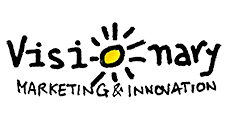Lead Generation in B2B

The notion of lead generation in B2B is as old as time, or almost. In 1898, the AIDA method, the ancestor of the sales funnel, was invented by St. Elmo Lewis [image from a presentation by Andrew Davis]. Indeed, this is why alternative, more modern methods that are more suited to complex selling have come to market.
B2B Lead Generation

What is a lead? A lead is just a lead. A lead is not a prospect and even less a customer. Lead generation is not a goal in itself, it is only a means. The means to get more customers.
In a lead generation approach, it is imperative to avoid the traditional war between marketing and sales departments
Marketing provides leads to salespeople who, more often than not, find these leads too weak, too low quality. Conversely, marketers sometimes find that salespeople are lazy and don’t follow through.
In order to prevent this sterile war from taking place, lead scoring must be performed, using a method validated by both the marketing department and salespeople.
This lead scoring will ideally be integrated into your marketing automation and/or CRM solution. You can classify leads according to their suitability for the product/service and their interest in the offer. If there is a fit but not much interest yet, marketing will have to continue nurturing the lead until it is mature. Having a match and interest, the sales team should process the lead without delay.
The Three Categories
Not having a lead scoring built into your marketing automation and/or CRM solution, means you can classify your leads into three categories:
- The IQL (Information Qualified Leads): these are what we call cold leads. They downloaded a white paper or case study and attended a free webinar. You regularly feed them with additional content proposals but, for the moment, there is no sign that they are ready to go further commercially.
- The MQL (Marketing Qualified Leads): MQLs are IQLs who have decided to learn a little more about how you could help them solve their problem. For example, they have downloaded documentation on one of your products. You accompany them to the “decision” phase by offering them a demo, a trial of your offer or by sending them one or more quotes. These are hot leads.
- The SQL (Sales Qualified Leads): SQLs are MQLs that have decided to take action with your company. However, they still need some reassurance. Eventually, a few final negotiations before taking action must take place. To close the sale, the responsiveness of your sales department will be key. The more responsive your salespeople are, the more the lead will feel listened to, safe and the faster they will sign.
The Limitations of Theoretical Approaches
One of the first criticisms that can be made of the definition of a lead concerns the funnel (the funnel).
the sales funnel is a theoretical view of the sales process, especially for B2B
In B2B, there is rarely a single decision maker. It is often a college of people. What’s more, decisions are often made through a process of recommendation and information that is not necessarily reflected by a person’s visit to a website.
Trends and Innovations in Lead Generation
Among the current trends, marketing automation comes out on top. Marketing automation allows you to systematize and automate a certain number of marketing actions. Such as e-mailing campaigns, SMS, and lead nurturing, all based on the behaviour of Internet users.
Regarding complex sales, ABM is more recommended. Lead generation is actually of no interest for 100,000 euro contracts. Even less for 20 million euro contracts.
Tools and Methods for Lead Generation
“Gated content” is one method for lead generation.
Referred as “gated content” any content that can only be read or downloaded after declaring at least one’s email address via a form. These contents can be white papers, ebooks, webinars, and use cases…
To collect information related to the lead (their email address, first name, last name, company, job title, etc.) landing pages are used.
These landing pages are optimized pages, which allow the lead to read a short description of the content to be downloaded or viewed and to fill out a form. In conclusion, once the form is completed, the lead is redirected to a URL that allows him to access the desired content (or via an e-mail).



